how a conventional septic system works
It retains solids and scum in a septic tank and pipes liquids to your septic drain field. If you were to dump say 2 bottles of bleach into the septic system depending on the size of the system it could potentially not get diluted enough before it entered the tank and when it mixes with the water in the tank it still could be potent enough to kill the essential bacteria in your septic tank.

Owts Conventional Septic Tank Drain Field Agrilife Extension Service
A worn out septic system may lead to various problems.
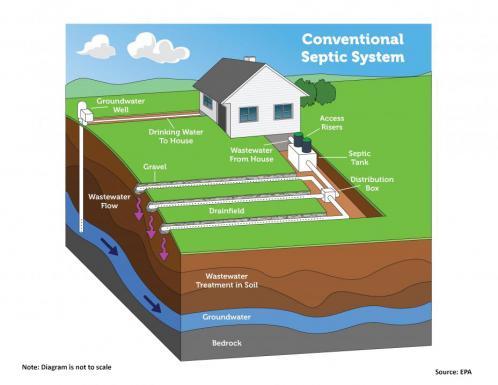
. These solids will then form a sludge while the oil and the grease float to the top as scum. This is a standard septic tank model and the most common one available. Wastewater leaves the home through pipes and flows into the septic tank where it separates into 3 layers.
The drainfield itself may be constructed in a variety of ways though it often incorporates gravel or stone in a shallow underground trench. The septic tank is a buried water-tight container usually made of concrete fiberglass or polyethylene. Septic system odors above the.
All water runs out of your house from one main drainage pipe into a septic tank. The tank feeds to a distribution box that branches into multiple runs. How Does a Septic Tank System Work.
Its usually made of concrete fiberglass or polyethylene. In a conventional septic system the majority of treatment occurs in the drainfield. Specifically this is how a typical conventional septic system works.
The septic tank will be a buried water-tight container. This video explains what a conventional septic system is how it works and how to properly maintain itProduced by the Anne Arundel County Department of Heal. The wastewater effluent leaving the septic tank can be gravity fed or pumped to this type of absorption system.
In your drain field bacteria break down wastewater pollutants and treated effluent returns to your propertys soil and groundwater. The septic tank receives wastewater from the residence. Conventional systems consist of a septic tank and a trench or bed sub-surface wastewater infiltration system.
The total price is also influenced by the price of the sand and the electric pump. Each of these runs. Simply put the septic system is responsible for filtering out and cleaning the water waste created by your household This includes the waste that flows through the pipes from your laundry area kitchen and.
Conventional Septic Systems In conventional septic systems which are the most common type wastewater will spread evenly across the drainfield after passing through a distribution box. Septic tanks are waterproof structures made of concrete metal or fiberglass that are used to collect wastewater. Specifically this is how a typical conventional septic system works.
Conventional septic systems are simple devices for processing domestic sewage yet they are poorly understood by many owners. The septic tank is a buried water-tight container usually made of concrete fiberglass or polyethylene. A conventional septic system is an in-ground soil absorption system that requires a minimum suitable soil depth of 48 inches.
Different than a traditional septic system the ATU uses the aerobic process for digestion rather than just the anaerobic process used in conventional systems. The drain field is another name for it. Conventional septic systems are much cheaper than mound septic systems because they are not that sophisticated.
This septic tank is set into the ground in a large container usually circular and plastic or metal. What is a leach field septic system. The solids settle to the bottom where microorganisms decompose them.
Septic tanks work by allowing waste to separate into three layers. In a conventional system your waste goes to a septic tank. A conventional septic system works by collecting wastewater from your toilets and drains.
The septic tank and the absorption field are the two main components of conventional septic systems. Understanding Your Septic Systemhttpwwwomafragovoncaenglishenvironmentfactssep_smarthtm. Heavier solids settle to the bottom and form a sludge layer.
Waste water flows from the tank through a solid pipe into a distribution box where it is then channeled into perforated pipes set in trenches of gravel. A conventional septic system is one of the most common septic systems available. A septic system is made up of a septic tank which is a watertight container buried in the ground and a drainfield or leach field.
The drainfield or leach field. Solids effluent and scum see illustration above. The purpose of the septic tank is to allow anaerobic bacteria bacteria that grows.
All water runs out of your house from one main drainage pipe into a septic tank. The water slowly seeps into the underlying soil in the drainfield. The average cost of a conventional septic system would be anywhere between 3100 and 15500 while for a mound septic system you will have to pay.
How a conventional septic system works When a stool in the home is flushed the wastewater drops into a drainpipe that carries it underground to a septic tank. Sewage flows from the building by gravity into the first chamber of a two-chamber tank where solids settle fats oils and grease float and microbes slowly break down the waste. An aerobic treatment unit or ATU is a small-scale sewage treatment system.
The job of the septic tank is to hold the wastewater long enough to allow solids to settle down the bottom. Its used in conjunction with a drain field which helps to eliminate the wastewater. Further settling takes place in a second chamber.
The leach or drain field is that section of the septic system which works to transport the wastewater back to the soil. Conventional Septic Systems are basically individually-serving on-site wastewater treatment units opted by properties that are not connected to centralized municipal sewer systems. Bacteria work on breaking down solids.
How an Aerobic System Works. Theres a lot we dont know about the conventional septic system and if you want to make sure that yours is working properly then you need to read on.
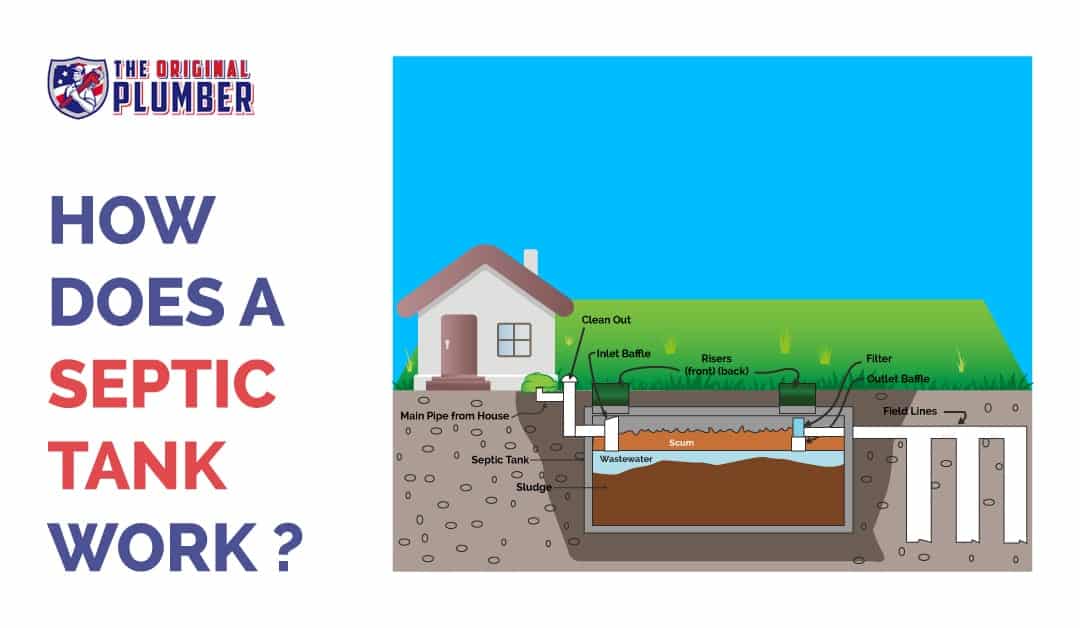
How Does A Septic Tank Work Learn How Septic Systems Treat Wastewater

Types Of Septic Systems Septic Systems Onsite Decentralized Systems Us Epa In 2020 Septic System Septic Tank Systems Water Treatment System
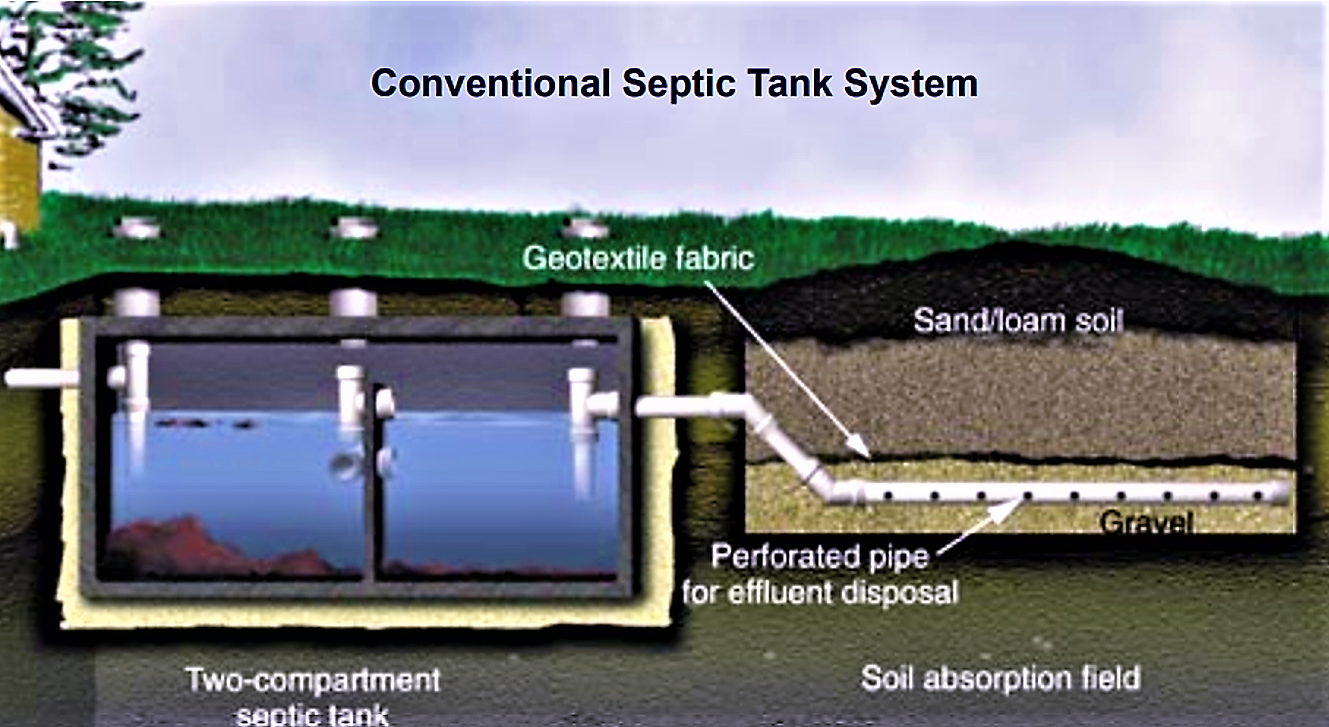
Septic Tank Sswm Find Tools For Sustainable Sanitation And Water Management

How A Septic System Works And Common Problems
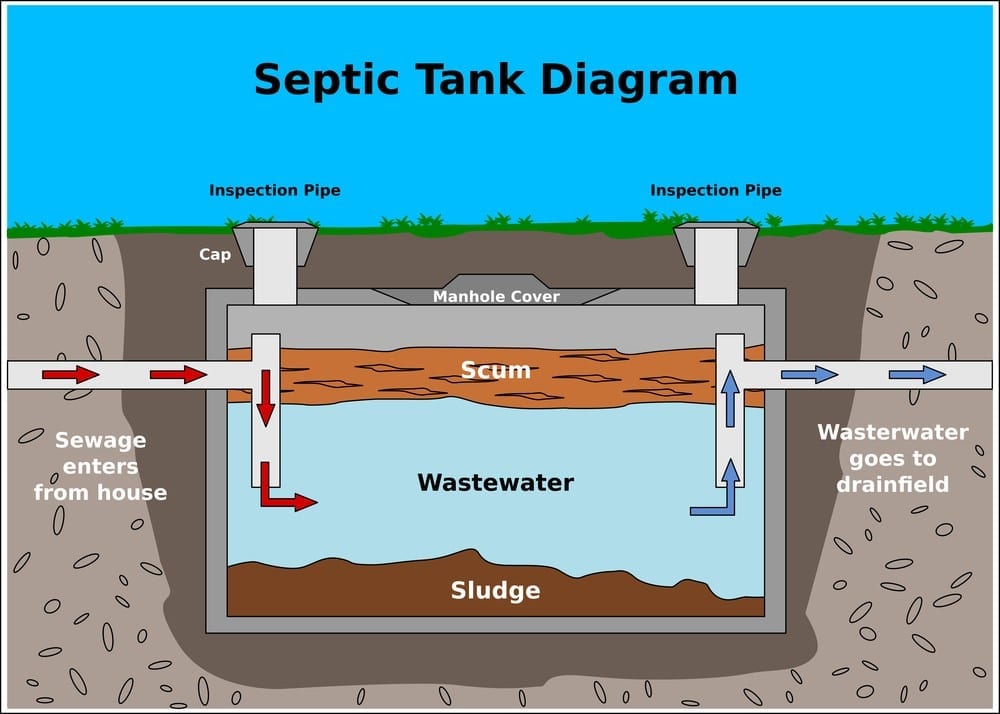
How Septic Systems Work Afc Home Club
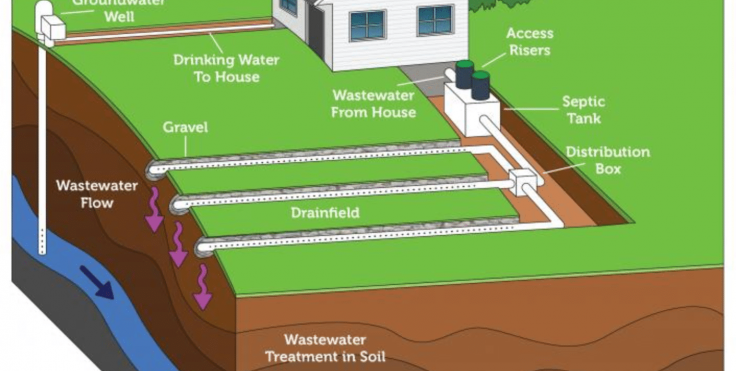
Septic System Types In Florida Martin Septic Service
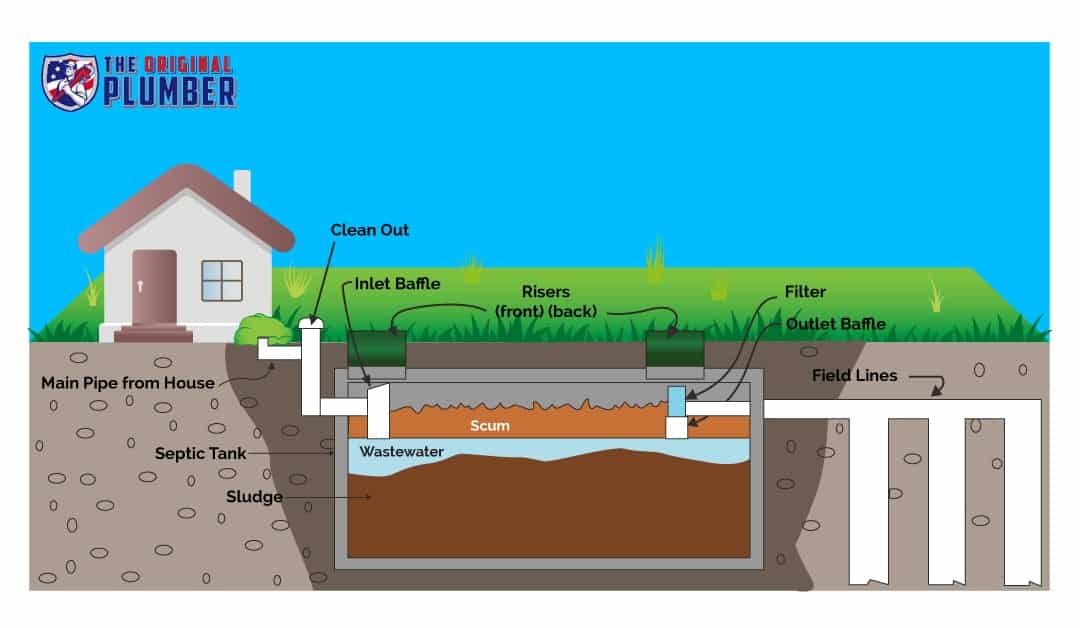
How Does A Septic Tank Work Learn How Septic Systems Treat Wastewater
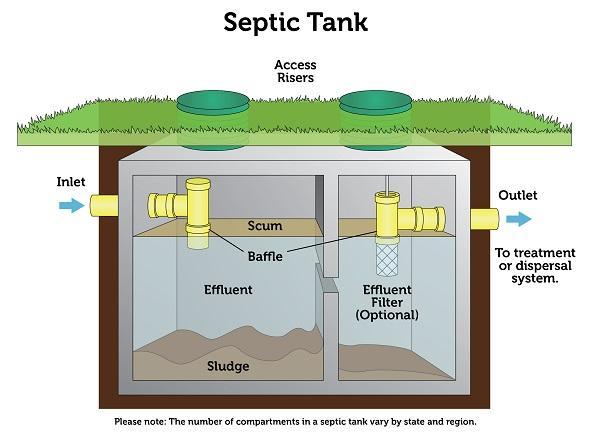
Understanding Your Septic System And How It Works University Of Maryland Extension

How Does A Septic Tank Work Learn How Septic Systems Treat Wastewater

Understanding Your Septic System And How It Works University Of Maryland Extension

What Is An Aerobic Septic System How Does An Aerobic Treatment System Work

Tech Corner Conventional Septic Tank Systems Niwa

Illustration Of Conventional Septic System Septic Tank Septic System Septic Tank Systems

Owts Conventional Septic Tank Drain Field Agrilife Extension Service
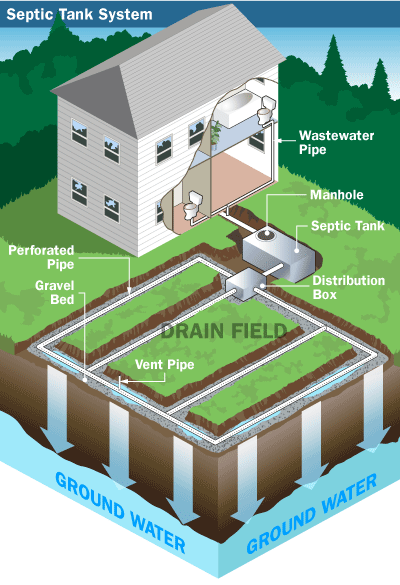
How Systems Work Environmental Health
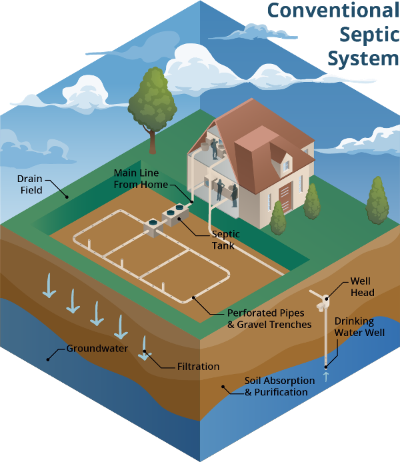
Your Septic System Water Programs University Of Florida Institute Of Food And Agricultural Sciences Uf Ifas
How A Conventional Septic System Works Tangent Company Llc

Types Of Septic Systems Three Oaks Engineering
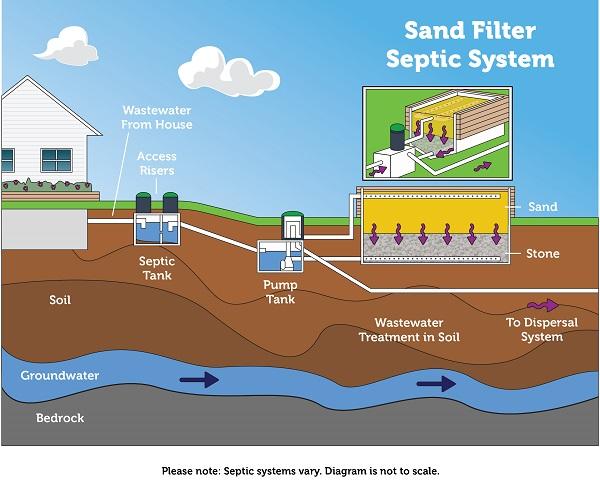
How Do Septic System Sand Filters Work Septic Tank Systems Express Wastewater